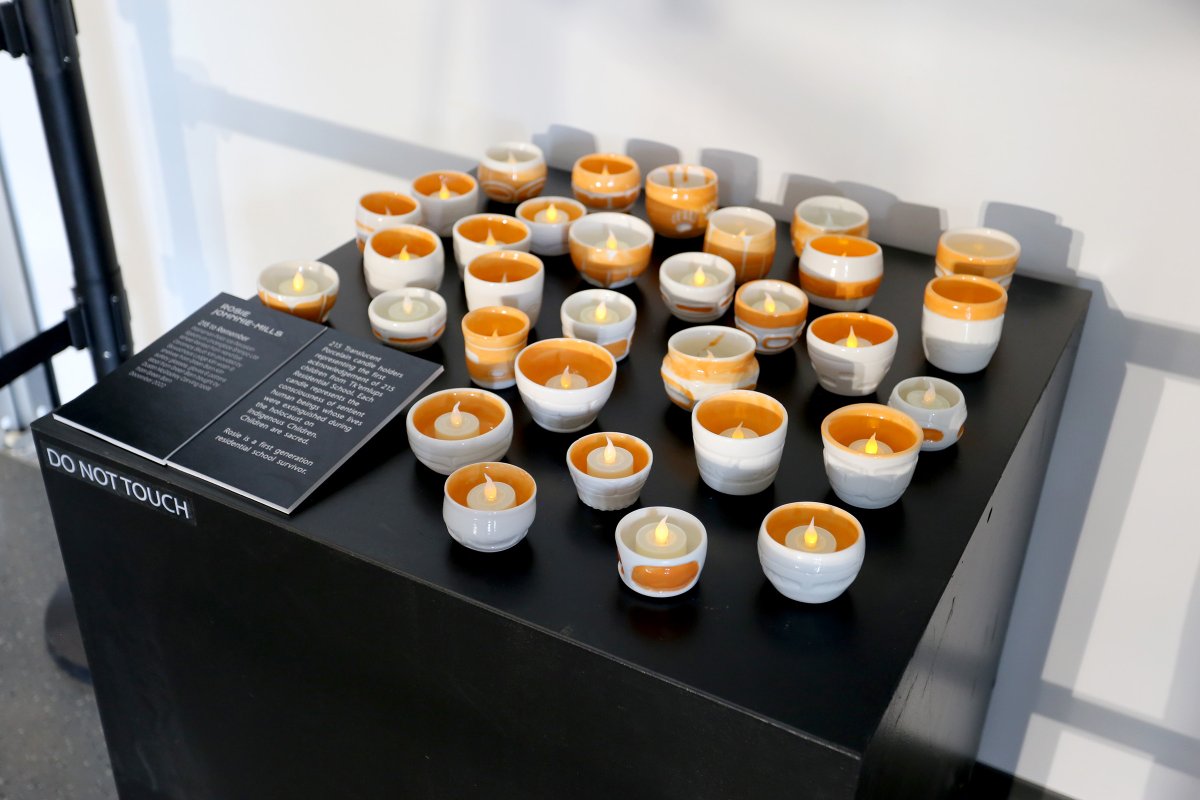Looking for more Indigenous news? Find our stories here.

B.C. artist Rosie Johnnie-Mills’ first exhibition went above and beyond her wildest expectations.
The Haida-Cowichan artist – who always thought her first exhibition would be with her late father – created small porcelain pots in honour of those who went to residential school for an exhibition at Science World in Vancouver.
“I created all these little pieces with all of the love I have for my dad and all of our relatives that survived, the ones that didn’t, and the ones that are still at those schools,” she said. “The exhibition took so much from me and I was just emotionally and mentally exhausted by the time it was done.”
As an intergenerational survivor, Johnnie-Mills was told about the unmarked graves and the residential school system by her father, and it’s something she thinks about every day. “It’s the residual, vicarious trauma, childhood trauma and PTSD that’s been handed down to me that’s not something I resent, but something I do my best to approach with love,” said Johnnie-Mills.
After putting everything she had into the work, it was picked up and out of her hands. But when Ēlya White, a Haida-Tsimshian content developer at Science World and fellow intergenerational survivor heard about the pieces coming and what they meant she reached out to Johnnie-Mills offering protocol and ceremony.
Though it was not part of her job description – only having been at Science World for three months – White knew implementing protocol was important to do because of how much Indigenous communities have lost.
“When anything like this happens, especially when it’s related to residential schools, I’m very protective of it,” said White. “I’m very aware of the impact that it has and I want to make sure that it’s honoured properly, as it should be because people don’t really.”
White wanted to make sure staff at Science World were aware of how important Johnnie-Mills’ art, and work like hers, is. She talked with them about instilling protocols: ensuring everyone wasn’t touching the art and if they had to, that their energy was good – an important element of working with art in Indigenous culture. “Basically, if you want to host our culture, that’s what you have to do, and no one questioned it,” said White.
Historically, not only has Indigenous art not been respected but neither has Indigenous culture. So when Indigenous people are in these everyday positions, acts like what happened between White and Johnnie-Mills can continually happen and begin to slowly heal decades worth of mistreatment.
“Having someone who understands what (my work means), understands what to do for ceremony and having an Indigenous person in an important position at Science World was just monumental for me, monolithic, legendary,” said Johnnie-Mills “To have my art honourably and culturally received, reciprocated, and to actually have this meaningful connection is huge.”

For White, it was also a teaching moment. She was able to have open conversations with Science World about what should be done when she’s not there and how they should treat Indigenous work in the future.
“And now (Ēlya) is the one that puts them to bed every night and wakes them up every morning, and she’s continuing the ceremony for their time at Science World,” said Johnnie-Mills.
The exhibition is part of Skwachays artists in residence program and Johnnie-Mills’ work is featured among several other artists. It’s available to see at Science World until February 10, 2023.




Comments